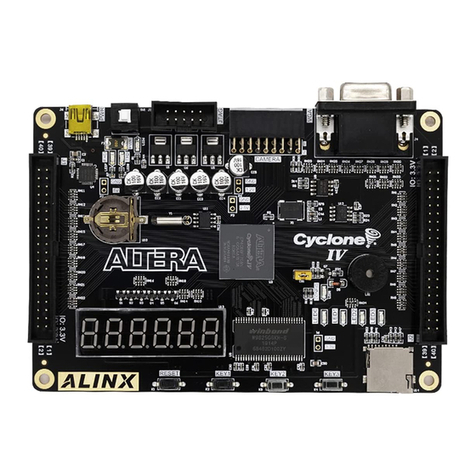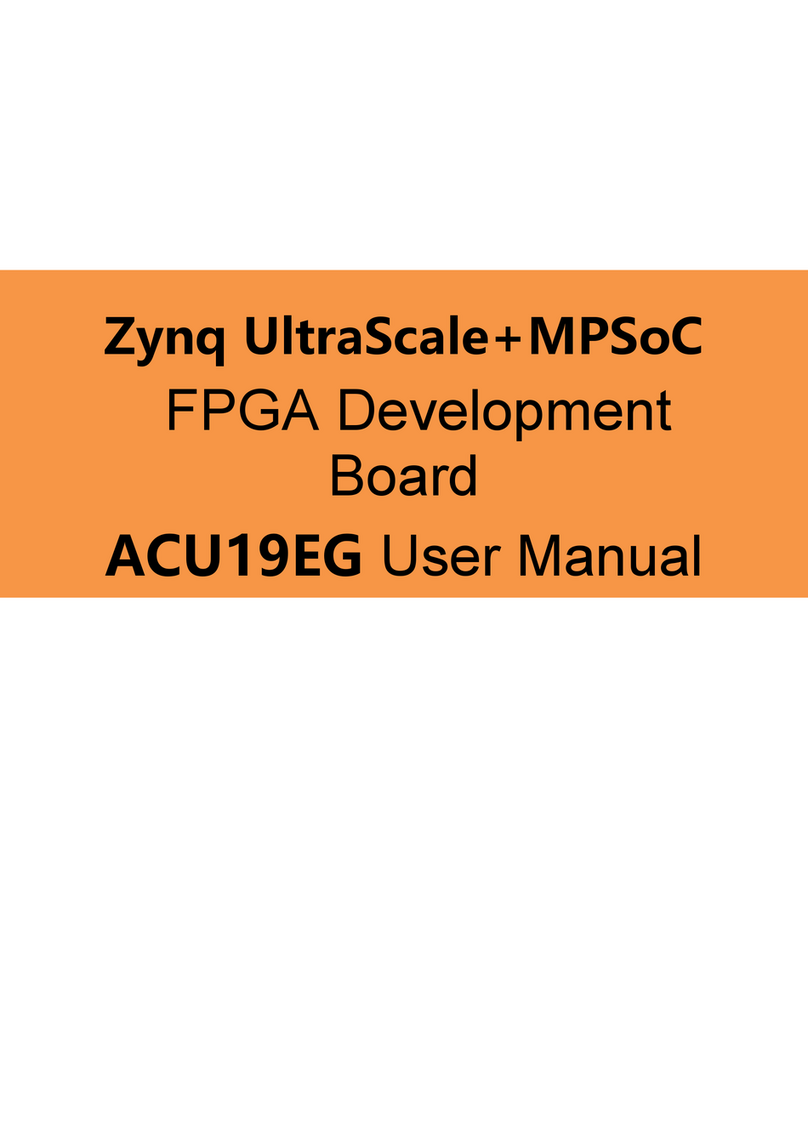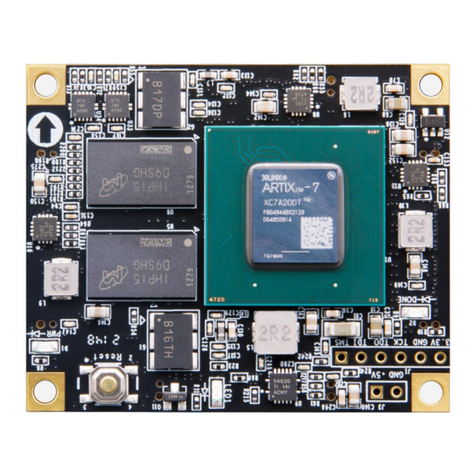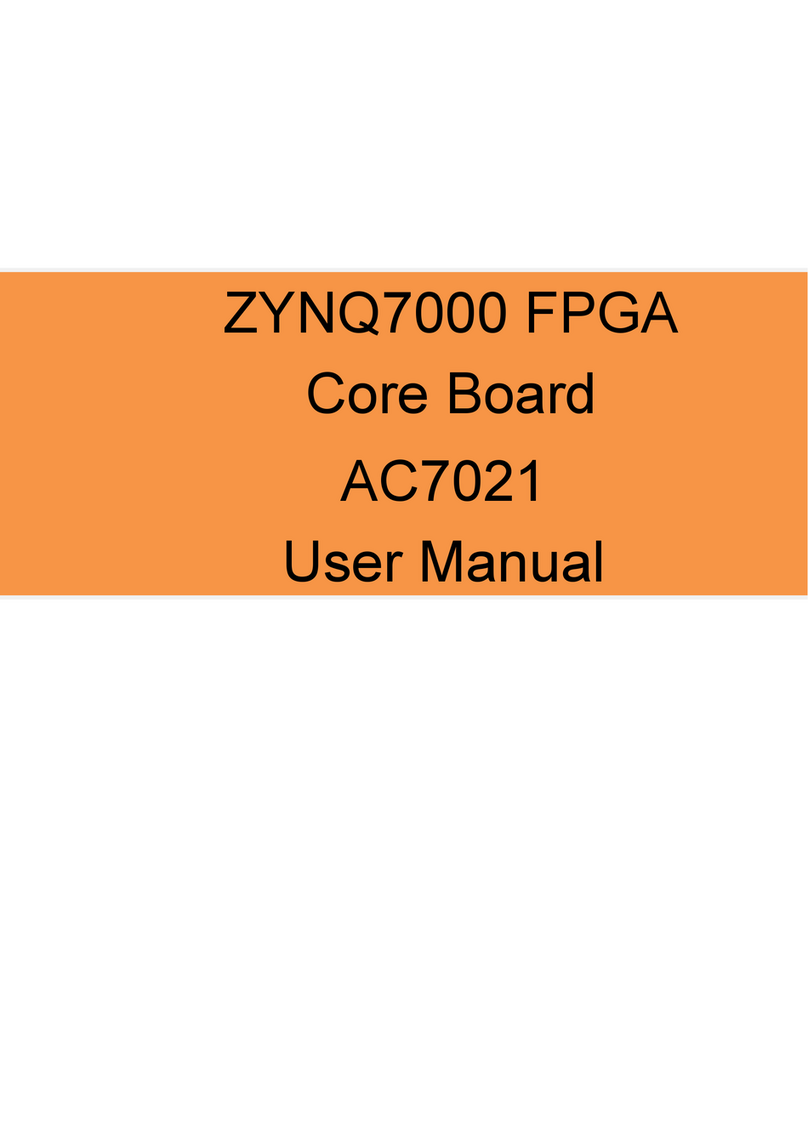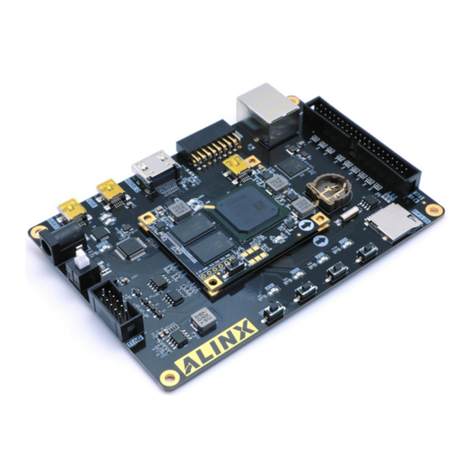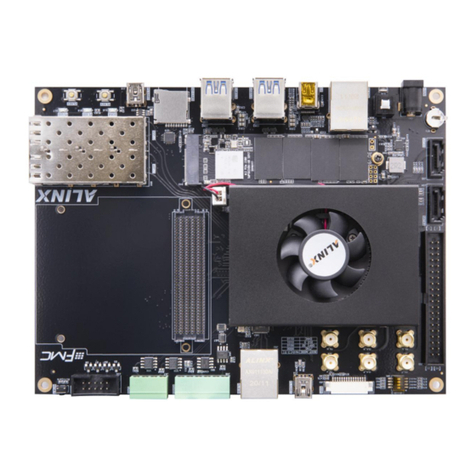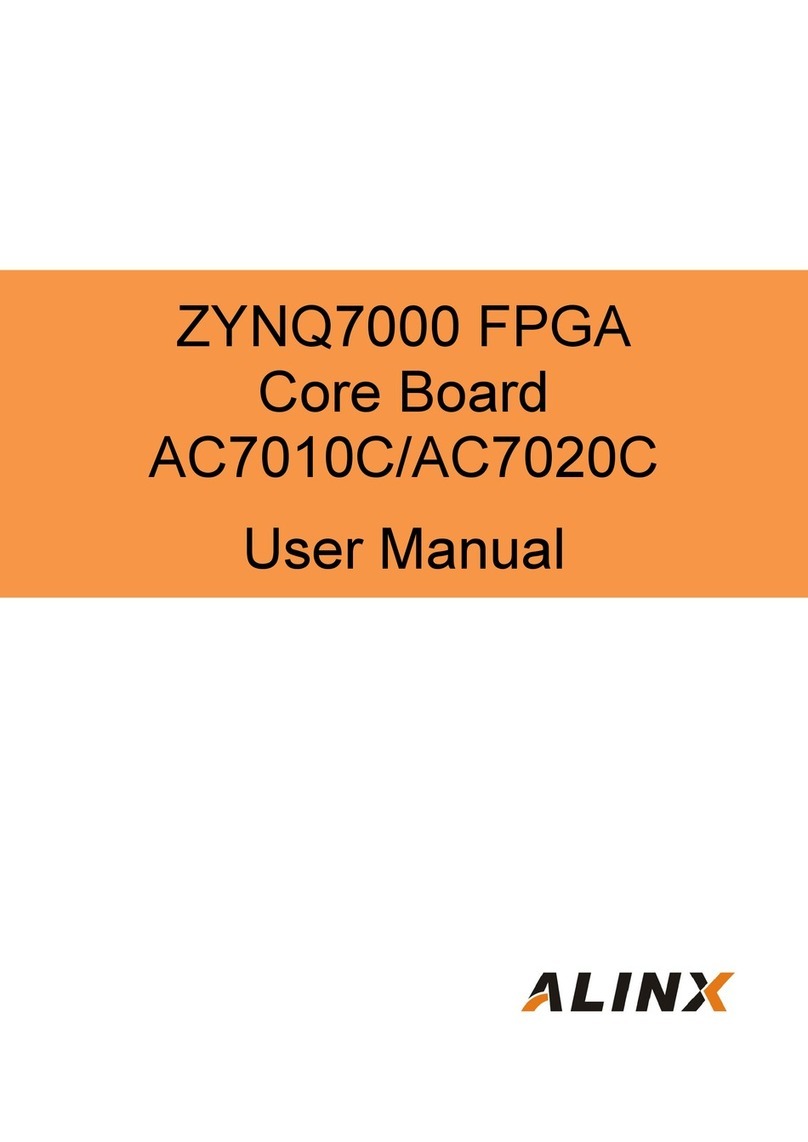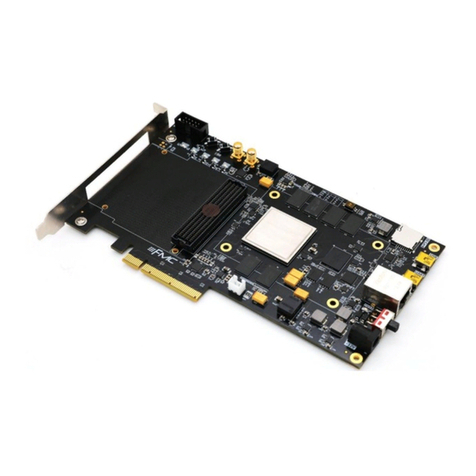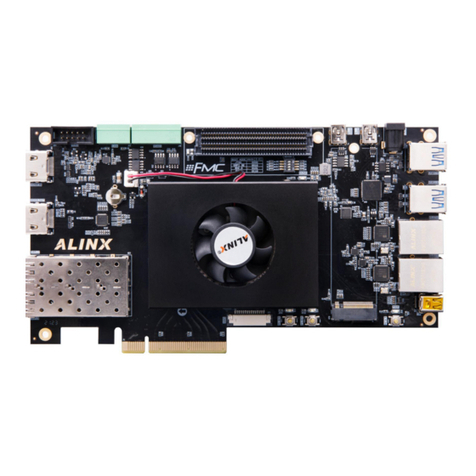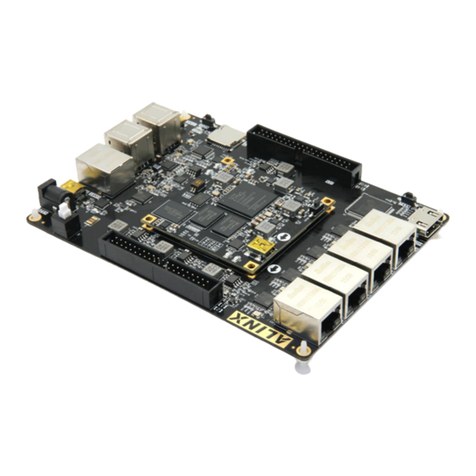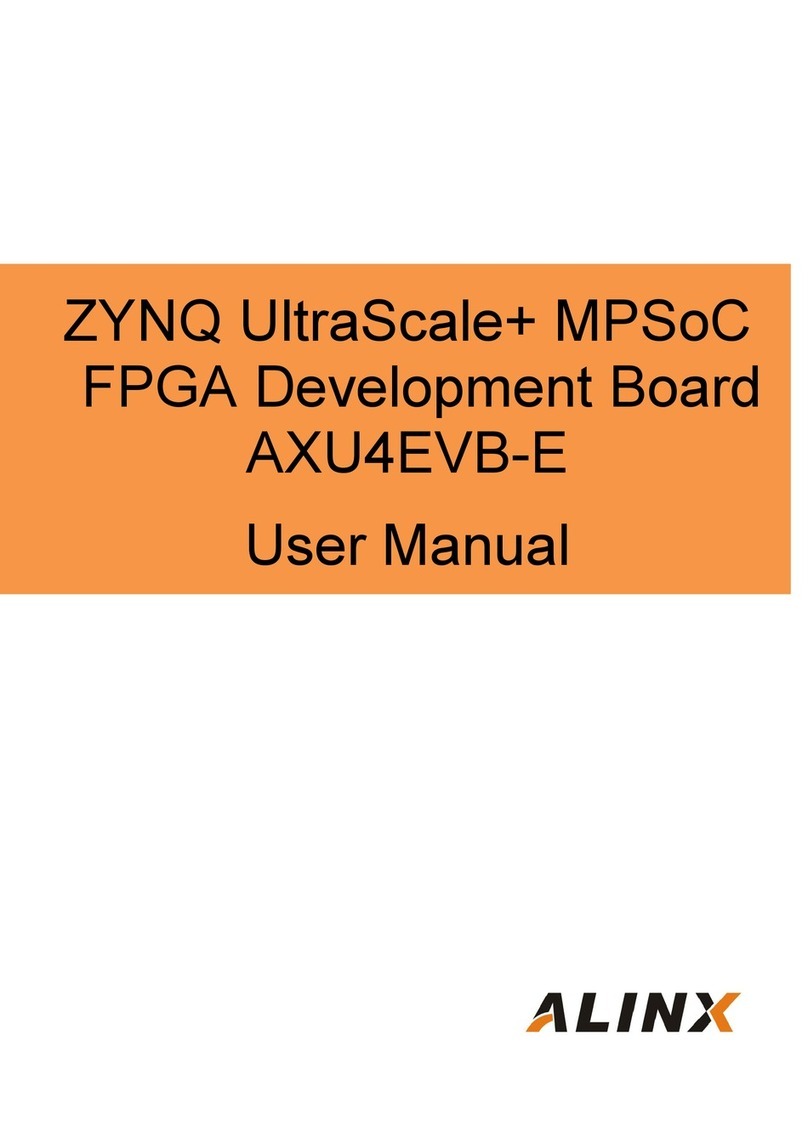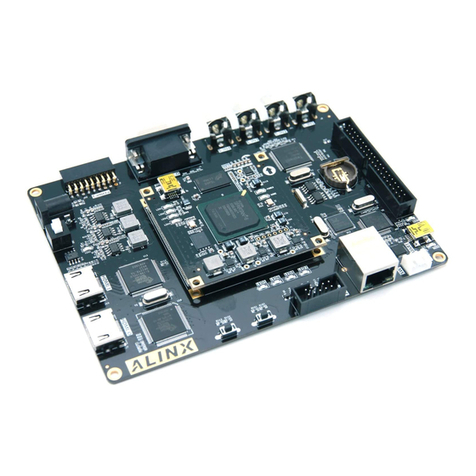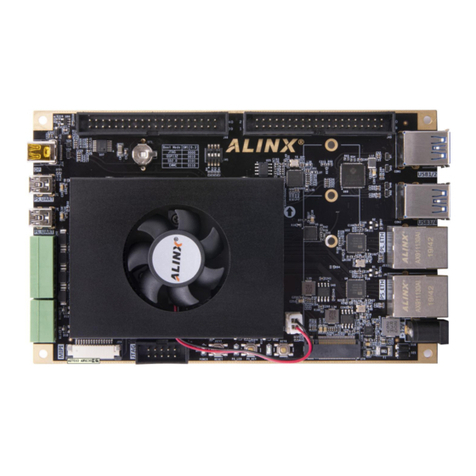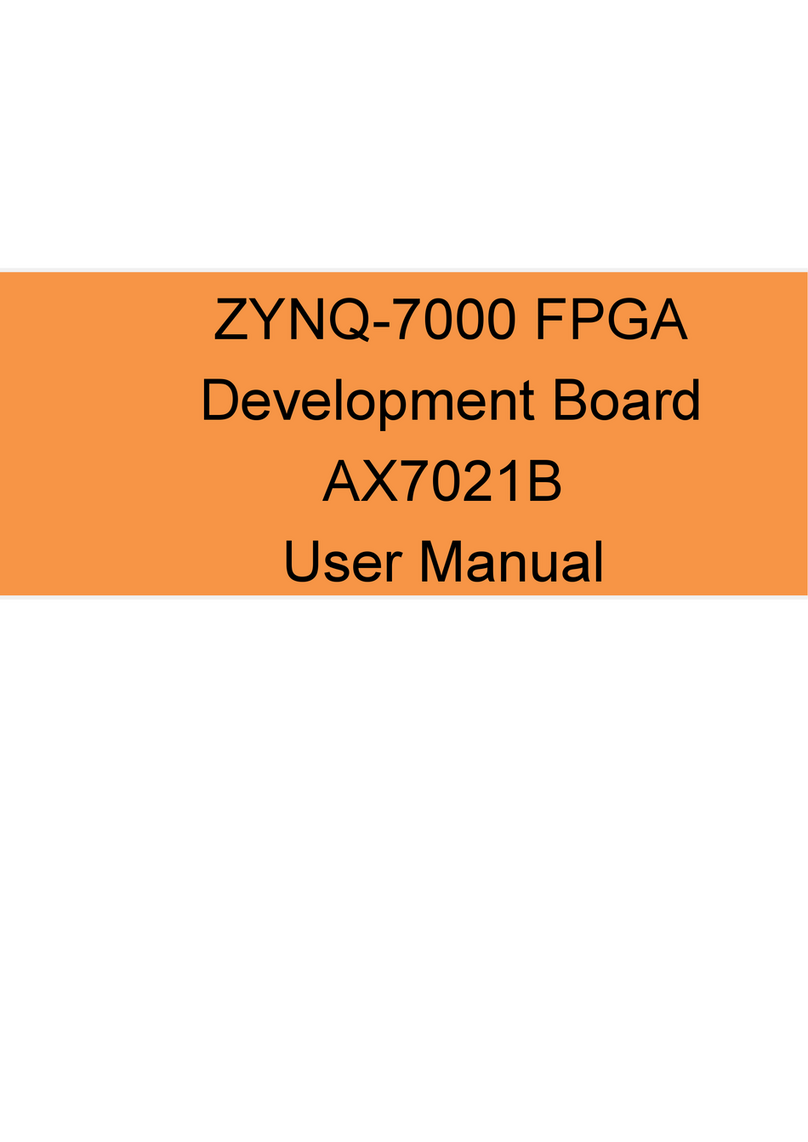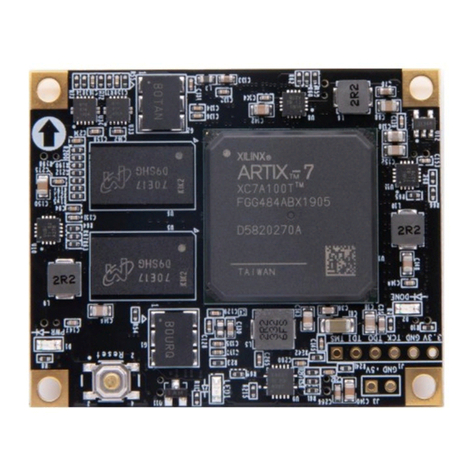
KINTEX UltraScale+ FPGA Board AXKU040 User Manual
Table of Contents
Version Record.......................................................................................................2
Part 1: FPGA Development Board Introduction............................................... 4
Part 2: FPGA Chip................................................................................................. 8
Part 3: DDR4 DRAM...........................................................................................10
Part 4: QSPI Flash.............................................................................................. 15
Part 5: Clock configuration.................................................................................16
Part 5.1: 200Mhz differential clock source..............................................16
Part 5.2: 125Mhz differential clock source..............................................16
Part 5.3: 156.25Mhz differential clock source........................................17
Part 6: USB to Serial Port.................................................................................. 19
Part 7: SFP+ Optical fiber interface................................................................. 20
Part 8: HDMI Video Output Interface............................................................... 22
Part 9: Gigabit Ethernet Interface.....................................................................24
Part 10: FMC Expansion Port........................................................................... 27
Part 11: SD Card Slot......................................................................................... 47
Part 12: SMA and SATA Interface.....................................................................49
Part 13: Temperature Sensor............................................................................ 51
Part 14: JTAG Interface......................................................................................52
Part 15: LED Light...............................................................................................53
Part 16: Keys........................................................................................................55
Part 17: Power Supply........................................................................................56
Part 18: Fan..........................................................................................................58
Part 19: Form Factory.........................................................................................59
